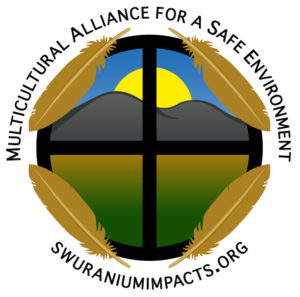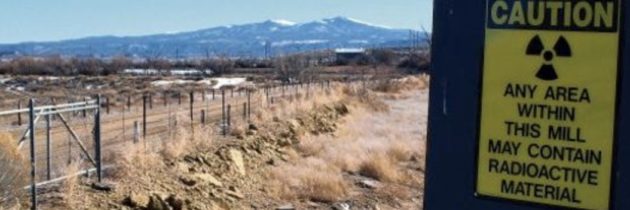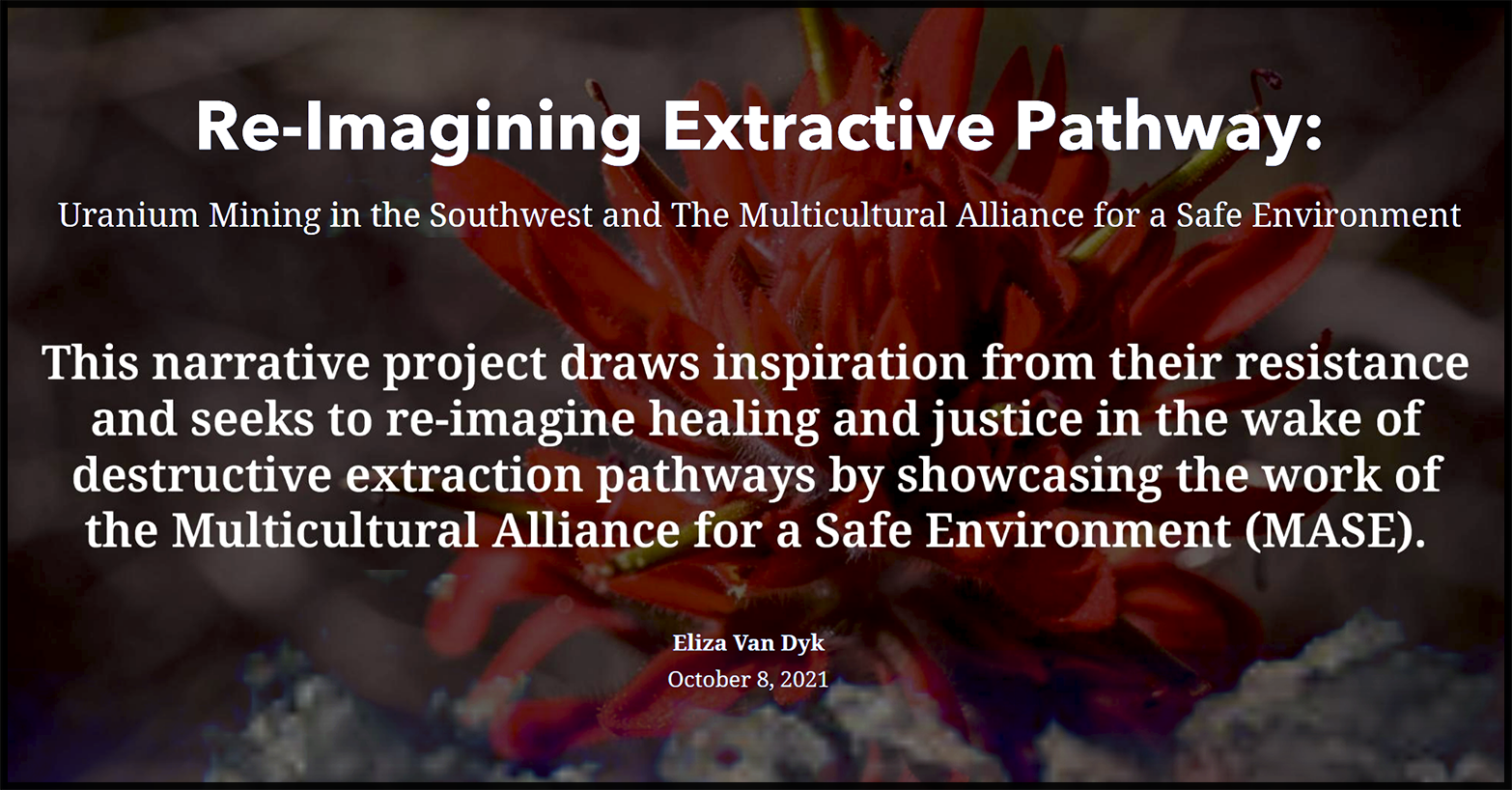A Uranium Ghost Town in the Making
by Mark Oldade and Maya Miller, video by Mauricio Rpdriguez Pons and Ed Ou, photography by Ed Out
Published August 8, 2022
https://www.propublica.org/article/new-mexico-uranium-homestake-pollution
Time and again, mining company Homestake and government agencies promised to clean up waste from decades of uranium processing. It didn’t happen. Now they’re trying a new tactic: buying out homeowners to avoid finishing the job.
The “death map” tells the story of decades of sickness in the small northwest New Mexico communities of Murray Acres and Broadview Acres. Turquoise arrows point to homes where residents had thyroid disease, dark blue arrows mark cases of breast cancer, and yellow arrows mean cancer claimed a life.
Neighbors built the map a decade ago after watching relatives and friends fall ill and die. Dominating the top right corner of the map, less than half a mile from the cluster of colorful arrows, sits what residents believe is the cause of their sickness: 22.2 million tons of uranium waste left over from milling ore to supply power plants and nuclear bombs.
“We were sacrificed a long time ago,” said Candace Head-Dylla, who created the death map with her mother after Head-Dylla had her thyroid removed and her mother developed breast cancer. Research has linked both types of illnesses to uranium exposure.
Beginning in 1958, a uranium mill owned by Homestake Mining Company of California processed and refined ore mined nearby. The waste it left behind leaked uranium and selenium into groundwater and released the cancer-causing gas radon into the air. State and federal regulators knew the mill was polluting groundwater almost immediately after it started operating, but years passed before they informed residents and demanded fixes.
The contamination continued to spread even after the mill closed in 1990.
The failures at Homestake are emblematic of the toxic legacy of the American uranium industry, one that has been well-documented from its boom during the Cold War until falling uranium prices and concerns over the dangers of nuclear power decimated the industry in the 1980s. Uranium mining and milling left a trail of contamination and suffering, from miners who died of lung cancer while the federal government kept the risks secret to the largest radioactive spill in the country’s history.
But for four decades, the management of more than 250 million tons of radioactive uranium mill waste has been largely overlooked, continuing to pose a public health threat.
ProPublica found that regulators have failed to hold companies to account when they missed cleanup targets and accepted incorrect forecasts that pollution wouldn’t spread. The federal government will eventually assume responsibility for the more than 50 defunct mills that generated this waste.
At Homestake, which was among the largest mills, the company is bulldozing a community in order to walk away. Interviews with dozens of residents, along with radon testing and thousands of pages of company and government records, reveal a community sacrificed to build the nation’s nuclear arsenal and atomic energy industry.
Time and again, Homestake and government agencies promised to clean up the area. Time and again, they missed their deadlines while further spreading pollution in the communities. In the 1980s, Homestake promised residents groundwater would be cleaned within a decade, locals told the Environmental Protection Agency and ProPublica. After missing that target, the company told regulators it would complete the job around 2006, then by 2013.
In 2014, an EPA report confirmed the site posed an unacceptable cancer risk and identified radon as the greatest threat to residents’ health. Still, the cleanup target date continued shifting, to 2017, then 2022.
Rather than finish the cleanup, Homestake’s current owner, the Toronto-based mining giant Barrick Gold, is now preparing to ask the Nuclear Regulatory Commission, the independent federal agency that oversees the cleanup of uranium mills, for permission to demolish its groundwater treatment systems and hand the site and remaining waste over to the U.S. Department of Energy to monitor and maintain forever.
Before it can transfer the site to the Department of Energy, Homestake must prove that the contamination, which exceeds federal safety levels, won’t pose a risk to nearby residents or taint the drinking water of communities downstream.
Part of Homestake’s strategy: buy out nearby residents and demolish their homes. Local real estate agents and residents say the company’s offers do not account for the region’s skyrocketing housing costs, pushing some who accept them back into debt in order to buy a new home. Those who do sell are required to sign agreements to refrain from disparaging Homestake and absolve the company of liability, even though illnesses caused by exposure to radioactive waste can take decades to manifest.
Property records reveal the company had, by the end of 2021, purchased 574 parcels covering 14,425 acres around the mill site. This April, Homestake staff indicated they had 123 properties left to buy. One resident said the area was quickly becoming a “ghost town.”
Even after the community is gone, more than 15,000 people who live nearby, many of them Indigenous, will continue to rely on water threatened by Homestake’s pollution.
The company said it has produced models showing that its waste won’t imperil the region’s water if it walks away. The NRC says it will only grant a groundwater cleanup exemption if that’s the case.
But while Homestake and other mining companies have polluted the region, it’s been the NRC and various other agencies that stood by as it happened. ProPublica found the NRC has issued exemptions from groundwater cleanup standards to uranium mills around the country, only to see pollution continue to spread. This has occurred as climate change hammers the West, making water ever scarcer.
“Groundwater moves. Groundwater doesn’t care about regulations,” said Earle Dixon, a hydrogeologist who reviewed the government’s oversight of uranium cleanup and pollution around Homestake for the New Mexico Environment Department and the EPA. Dixon and other researchers predict contamination at Homestake will likely spread if cleanup ends.
The company has denied that its waste caused residents’ illnesses, and judges ruled in Homestake’s favor in a case residents filed in 2004 alleging the site caused cancer. Doctors testified that the pollution was a substantial factor contributing to residents’ cancers, but tying particular cases to a single source requires communitywide blood, urine and other testing, which hadn’t been done.
To see the entire story with sound and video click this link: https://www.propublica.org/article/new-mexico-uranium-homestake-pollution






